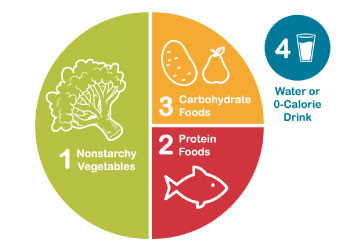Starchy Foods and Diabetes

What are Starchy Foods?
Starchy foods are often thought to be the only type of carbohydrates, and this is quite misleading as they belong to a class of food called carbohydrates.
There are different types of carbohydrates which include
- Starch
- Fiber
- Sugar
Carbohydrates generally have the most significant impact on blood sugar compared to other macronutrients like fat and protein. Hence, it is wise to make healthy carbohydrate choices.
So what type of Carbohydrates should I eat?
Starchy carbohydrates should be part of a healthy diet, given you adhere to appropriate portions. However, different types of carbohydrates have different impacts on blood sugar.
Starchy foods are a group of complex carbohydrates with more than two units of sugar linked together. These carbohydrates are usually slowly digested, releasing sugar into the bloodstream slower. It is ideal to go for minimally processed complex carbohydrates like whole grain bread, brown rice, pasta, acha, potato with skin etc. because they also contain fiber, vitamins and minerals that prevent micronutrient deficiencies.
Fiber is a group of carbohydrates found in plant walls known as non-starchy polysaccharides. They are found in plant-based foods, fruits and intact grains, and we cannot digest them, but they are also a major component of carbohydrates. Some examples that come to mind are non-starchy vegetables spinach, okro, bitterleaf, utazi leaf, oatmeal, apple, pears. This group of carbohydrates help in controlling blood sugar levels; however, fruits and grains would require portions while working with your diabetes team.
Sugar is a group of simple sugars that have one unit of sugar. There are natural sugars (fruits, milk ) and added sugars (soda, table sugar, honey, candies, molasses). This class of carbohydrates raises blood sugar and has been related to many diseases, such as diabetes, hypertension, obesity, cancer etc.
How much should I eat?
Now that you understand starchy carbohydrates better, the next step in knowing how much to eat is to get familiar with the diabetic plate method to start implementing portion control in your meals.

- Keep ½ of your plate full of non- starchy vegetables.
- Keep ¼ of your plate with lean protein.
- Keep ¼ of your plate with carbohydrates.
Focus more on making healthier carbohydrate choices like complex carbohydrates and fiber. Limit simple sugars as much as possible unless in cases of low blood sugar.
Platos health helps you track what you eat and how much you eat and provides an ecosystem for convenient and comprehensive access to care as you manage your diabetes.
For more carb choices and portion control, download Platos and speak with your dietician to help personalize your plate.